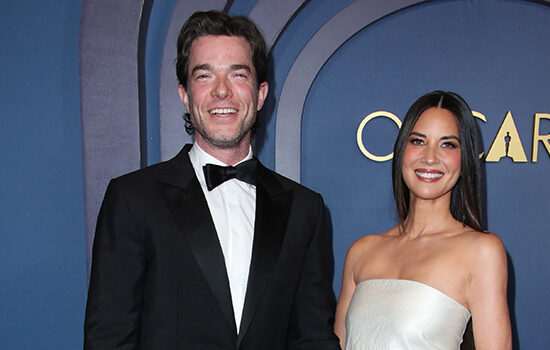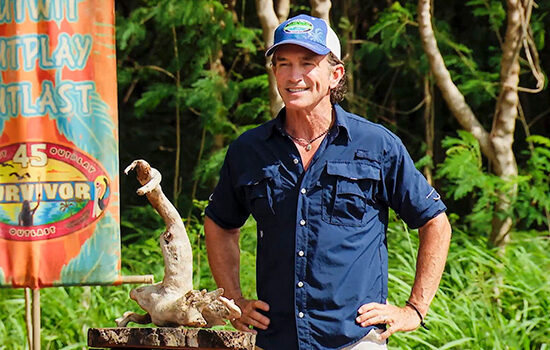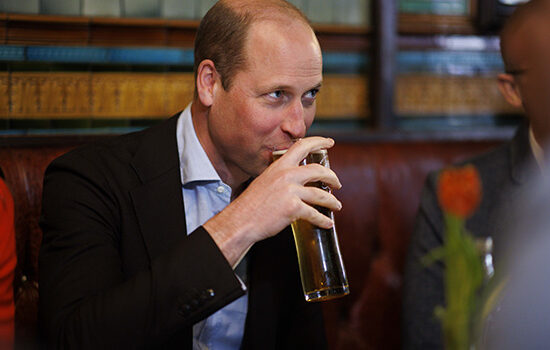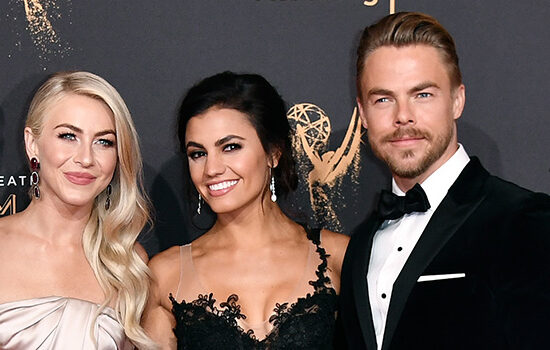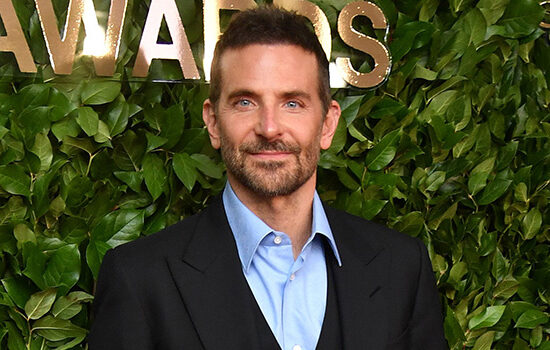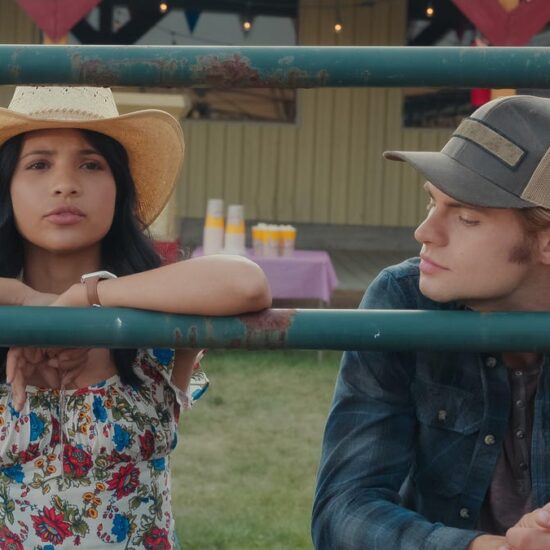
Filmmaker and photographer Timothy Greenfield-Sanders may be best known for his extraordinary, large-format portraits of everyone from world leaders to artists, actors and underground icons, but it was his attendance at the AFI’s Conservatory film program in the 1970s that inadvertently launched his storied career in portraiture and temporarily waylaid his career as a director. His love of film never waned, though, and in 1998 he returned to the medium with the Grammy Award-winning documentary Lou Reed: Rock and Roll Heart.
Eight feature documentaries (including the acclaimed The Black List) later, Greenfield-Sanders offers The Boomer List. Premiering September 23 as part of PBS’ American Masters series, the film features 19 personalities, each representing the rapid cultural, social, political and technological shifts of the baby boom years of 1946 to 1964.
American Masters executive producer Michael Kantor (left) with filmmaker/phorographer Timothy Greenfield-Sanders. Courtesy of (c) Greenfield-Sanders Studio
Greenfield-Sanders spoke with Documentary by phone from his home in New York.
Documentary:Why did you choose to do The Boomer List now?
Timothy Greenfield-Sanders: I felt it was the right moment. I love anniversaries of things, and this year is the 50th anniversary of the last of the boomers. It seemed like a great moment, and everyone is still pretty vibrant. Everyone is still active and doing cool things, and that was a big part of the motivation.
D: How did you select the particular group of people who appear in the film?
TGS: It was like working on a Rubik’s Cube in the dark. It was very difficult to figure out who belonged in it, and I had restrictions that I placed on myself. I wanted to balance it with men and women. I wanted to have diversity and try to limit the categories so if there was a musician picked—let’s say Billy Joel—I didn’t get to pick two or three other ones. I would have liked to have picked Reverend Run for 1964 but I had Billy Joel, so I ended up with John Leguizamo.

John Leguizamo, from Timothy Greenfield-Sanders’ The Boomer List. Courtesy of (c) Timothy Greenfield-Sanders.
I’m very proud of the film. It shows the real range of the generation. I wanted to show Erin Brockovich. I wanted to show Steve Wozniak. I wanted to show all of these tremendous changes that happened and the people who helped make those changes.
D:How much time did you take with each subject?
TGS: At least an hour and a half to two hours. It’s Timothy Greenfield-Sanders portraiture comes to life! Also, I photograph everyone, so they came for the interview and they’d sit for a large-format portrait on my 8X10 camera as well. Those portraits are opening on September 26 at the Newseum in Washington, DC.
D:The thing that I find most fascinating is that even though these are essentially talking heads, they’re dynamic. What kind of magic are you working there?
TGS:I always believed that, when you looked at my portraits that were hanging in galleries or museums, people could look at them for a while and get something out of them. Then I always thought, If they could talk to you it would be even more interesting. I wanted to light everyone the same way as that. Over the years I think I’ve developed a very personal, distinctive style of portraiture. It’s a single light source. It’s a very clean background. It’s never about the setup or my fancy lighting. It’s always about the subject. That’s what works.
Direct-to-camera talking is so powerful. When we started The Black List, Errol Morris was doing it and that was about it. If you look today, every commercial, Academy promos, Gap commercials—everybody does direct to camera. The over-the-shoulder look is gone. The reason it works is that it’s much more intimate. It feels like the person is talking to you.
D: But then there are some people who do it better than others.
TGS: (Laughing) Am I allowed to call myself a renowned portrait photographer? I know how to light people. There are ways to do it with a certain elegance that really heightens the effect, and I hope that comes through.
D: What were you shooting with?
TGS: We’re now using the Red. It’s all technology at this point, and resolution. We used to use the Panasonic HVX200. When we shot with that system we used two cameras, one on top of the other- one close-up and one medium. Now we use one camera with much higher resolution.
D: When you were editing, how did you break down the interviews to achieve the film’s narrative effect?
TGS: There’s an arc to each of these little stories. You look at the hour interview and you throw out the obvious stuff that didn’t go anywhere, and in some cases you have so much good material that it’s very difficult. In other cases it’s pretty clear where the storyline is. I think the other thing that comes into play is what other people have said in the film. You don’t want everyone talking about the Kennedy assassination, even though it’s such a seminal moment.
Take Sam Jackson, for example. I think it’s a wonderful piece because he talks about segregation and growing up and education, and I don’t think you ever hear that from him. We tried to find things that people hadn’t said before, or said them better this time.
D: You started out at AFI. Was your intention to become a filmmaker and you became a photographer, or vice versa?
TGS: As a teenager I was influenced by Warhol and underground film, and I came to New York and went to Columbia and got an art history degree. I became friendly with some of the Warhol people and that was my direction. Then I went to AFI to learn film. At AFI you would see every film by Bergman, and then Bergman would come to campus and the 25 of us students would sit and have a seminar with him.
They needed someone to photograph the seminar guests for the school’s archive, and no one else would do it. So I said I would. They paid $25! I would photograph all the visiting dignitaries, but I had no idea what I was doing. One day I was leaning down and shooting Bette Davis’ portrait and she said, “What the fuck are you doing? You’re shooting from below. You never shoot from below.” I said, “I really don’t know what to do.” So she said, “If you can drive a car, I can teach you about photography.” So I drove her around and she talked to me about [George] Hurrell and all the great photographers who had shot her.
I photographed Hitchcock and he said, “Your lights are in the wrong place. They should be over here. Come over to the studio and I’ll introduce you to the lighting people.” I fell in love with portraiture, and it was really through these legendary Hollywood stars that I learned it. By the time I finished AFI I had a very interesting portfolio of very famous people. Long story short, I bought a large-format camera and became a portrait photographer.

Environmental activist Erin Brockovich, from Timothy Greenfield-Sanders’ The Boomer List. Courtesy of (c) Timothy Greenfield-Sanders
D: Do you have any more Lists planned for the future?
TGS: I have been working on The Women’s List for a while. It’s nearly done. We’re just trying to figure out where it’s going to end up. It has a few more spots available in it and we’ve done a number of amazing people.
Elisabeth Greenbaum Kasson is a Los Angeles-based writer and editor whose work has appeared in the Los Angeles Times, Documentary, Los Angeles magazine, Movie City News, Dice.com, Health Callings and more. Her stories have covered the gamut from movies, music and culture to IT and healthcare.









